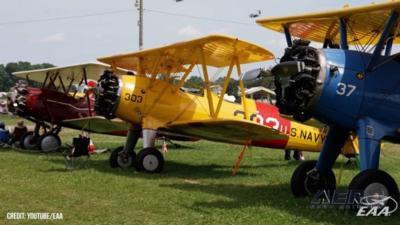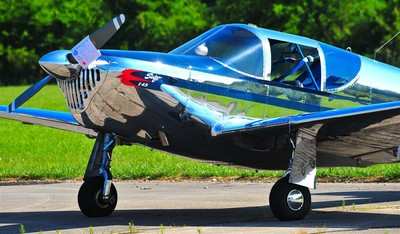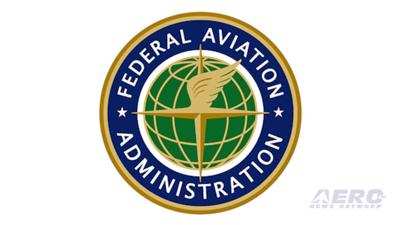New Program Allows Broadened Parts Options
The FAA has unveiled a new program for the use of off-the-shelf parts in type-certificated aircraft. The approval is the first granted under the new Vintage Aircraft Replacement and Modification Article (VARMA) program—a decisive and important victory in the ongoing battle to keep vintage aircraft airworthy.

Owners and operators of vintage aircraft are overly familiar with the challenges inherent locating and securing FAA-authorized parts for their machines—especially rarer models that lack manufacturer support. Infuriating conundrums arise when pedantic restrictions deriving of antiquated FAA aircraft-type certificates preclude the use of readily available, perfectly functional, and safe alternative (non-OEM) parts.
The new VARMA initiative draws from extant FAA policies to create a program requiring no new regulations, orders, or Advisory Circulars (AC). VARMA applies to small (less than 12,500 pounds) type-certificated aircraft built before 1980. The program allows ordinary maintenance personnel to confirm certain low-risk replacement parts are suitable for installation on eligible aircraft in the absence of complex and costly engineering analysis or time-consuming FAA design and production approvals.
VARMA is not a wholly new policy. The program amalgamates numerous extant FAA policies including, in part, AC 43-18 and AC 23-27. VARMA, in its essence, provides aircraft owners a streamlined means by which to meet the requirements of the antecedent Advisory Circulars. In point of fact, the only new FAA document created expressly for VARMA is a Work Instruction specifically for FAA personnel.
While the aforementioned ACs allowed parts substitutions, approvals of such were characteristically difficult to obtain and document in a manner satisfactory to subsequent owners and maintainers of modified aircraft. VARMA optimizes the antecedent policies and ensures regulatory continuity throughout aircrafts’ successive owners and respective service lives.

EAA chairman and CEO Jack Pelton stated: "This is great news for those of us who own and fly vintage aircraft. There could easily come a time when a classic airplane that would otherwise be grounded for want of a part that’s no longer available will fly again thanks to the parts substitution enabled by VARMA.”
The VARMA program applies to non-critical parts, the failures of which do not “prevent continued safe flight and landing.” Though VARMA does not pertain to safety-critical components, the program nevertheless renders many clone and aftermarket aircraft parts immediately and legally available and installable, thereby alleviating the burden currently borne by vintage aircraft owners desiring to keep their aircraft flying within the constraints of FAA regulation.
The FAA, for the time being, will manage the VARMA program primarily through its Chicago Aircraft Certification Office, which can be reached at 847-294-7357. VARMA is supported at all levels of the FAA, however—from the lowliest field inspector to the agency’s Administrator (should a properly-qualified one materialize).
Aircraft owners ought to note VARMA affords no blanket approvals. Under VARMA, all approvals are serial number specific; production and multiple-use approvals are not authorized. Ergo, part manufacturers will not be permitted to advertise their products as VARMA-approved. FAR 21.9 (b) prohibits manufacturers from advertising parts for use in type-certificated aircraft absent a production approval—such as a Parts Manufacturer Approval (PMA) or type certificate.
The fundamental intent of VARMA is to afford aircraft maintainers ability to keep vintage aircraft airworthy by providing an alternate avenue to authorize replacement parts for which certified versions cannot be obtained. For the purposes of VARMA, obtainable is defined as a certified replacement part eligible for installation on the aircraft in question currently offered for sale by either subject part’s OEM or a third party under a PMA, with a lead time that does not exceed 12 months.
The sort of data the FAA will require vis-à-vis parts replacement under VARMA will be predicated upon the criticality category into which the part to be replaced falls.
AC 43-18 breaks down parts into criticality categories:
- Category 1 Part: A fabricated part, the failure of which could prevent continued safe flight and landing, reduce safety margins, degrade aircraft performance, or occasion inability to conduct certain flight operations.
- Category 2 Part: A fabricated part, the failure of which would not prevent continued safe flight and landing, but would reduce the capability of the aircraft or the ability of the crew to cope with adverse operating conditions or subsequent failures.
- Category 3 Part: A fabricated part, the failure of which would have no effect on the continued safe flight and landing of the aircraft.

The EAA has promoted the creation of a new category under which vintage aircraft could be recertified and regulated after the fashion of homebuilt flying-machines. In exchange for a prohibition on carrying persons or property for compensation or hire, vintage aircraft, under the provisions of the proposed category, could be maintained by their owners, serviced with non-certified parts, and modified in the same manner as homebuilt aircraft. The EAA contends aircraft flown strictly for personal use ought not be held to the same certification standards as normal and transport-category airplanes and rotorcraft. The most recent attempt to actualize such a category was set forth in the early drafts of the forthcoming Modernization of Special Airworthiness Certification (MOSAIC) rule—an inchoate FAA initiative that proposes wide changes across the light aircraft segment, including the creation of an entirely new Light Personal Aircraft (LPA) category.
 ANN's Daily Aero-Term (04.25.24): Airport Rotating Beacon
ANN's Daily Aero-Term (04.25.24): Airport Rotating Beacon ANN's Daily Aero-Linx (04.25.24)
ANN's Daily Aero-Linx (04.25.24) Klyde Morris (04.22.24)
Klyde Morris (04.22.24) Airborne 04.24.24: INTEGRAL E, Elixir USA, M700 RVSM
Airborne 04.24.24: INTEGRAL E, Elixir USA, M700 RVSM Airborne 04.22.24: Rotor X Worsens, Airport Fees 4 FNB?, USMC Drone Pilot
Airborne 04.22.24: Rotor X Worsens, Airport Fees 4 FNB?, USMC Drone Pilot





